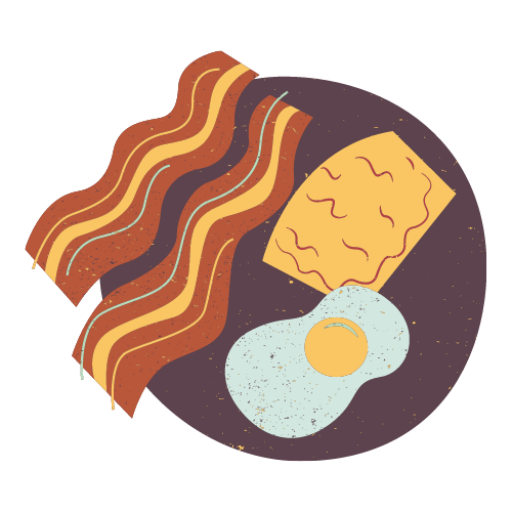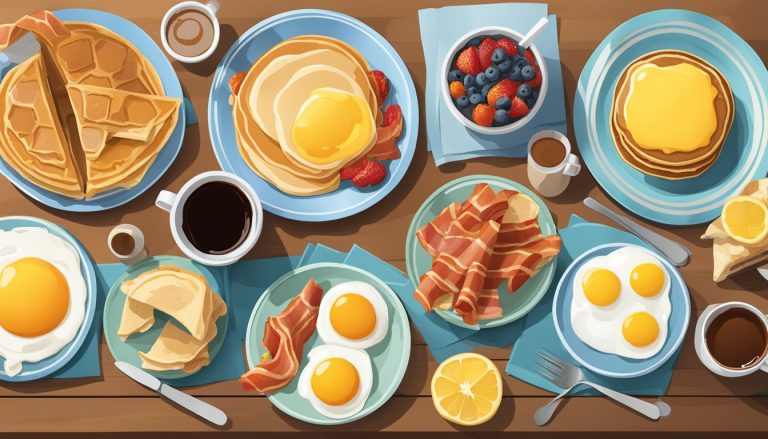Jack’s quest for the perfect toast led him to explore the science behind this seemingly simple culinary process. He discovered that achieving golden-brown perfection involves more than just popping bread into a toaster. The Maillard reaction, a complex chemical interaction between amino acids and sugars, is the key to unlocking enhanced flavors and aromas in toasted bread.
The ideal toast results from a combination of factors, including bread type, moisture content, and temperature control. Jack found that denser, whole-grain breads typically require longer toasting times due to their higher moisture levels. He also learned that optimal toasting temperatures range from 350°F to 400°F, with toasting times varying between 5 to 10 minutes depending on the oven temperature and bread thickness.
Jack’s exploration revealed that selecting high-quality bread and ensuring even heat distribution are crucial for achieving consistently perfect toast. By understanding these scientific principles, Jack was able to elevate his toasting game and create slices with the perfect balance of crunch, flavor, and golden-brown color.
The Basics of Toasting Bread
Toasting bread involves precise techniques and scientific principles to achieve the perfect golden-brown slice. The process relies on careful temperature control, bread selection, and understanding the chemical reactions that occur during toasting.
Understanding the Maillard Reaction
The Maillard reaction is the key to flavorful toast. This complex chemical process occurs when amino acids and sugars in bread are exposed to heat. It creates hundreds of different flavor compounds and browns the bread’s surface.
As bread toasts, its starches break down into simple sugars. These sugars then react with amino acids, producing new flavors and aromas. The reaction accelerates as temperature increases, typically starting around 140°C (284°F).
The Maillard reaction also affects texture. It forms new molecules that create a crisp outer layer while maintaining a soft interior. This balance is crucial for achieving the ideal toast consistency.
The Role of Bread Type in Toasting
Different bread types toast differently due to variations in composition and structure. Sourdough bread, for example, has a unique toasting profile.
Sourdough’s acidity and dense texture result in a slower toasting process. This allows for more even browning and a distinctive tangy flavor when toasted. The bread’s natural fermentation also produces more complex sugars, enhancing the Maillard reaction.
White bread toasts quickly due to its higher sugar content and lighter texture. Whole grain breads require longer toasting times because of their higher moisture and fiber content.
For optimal results, adjust toasting time and temperature based on bread type. Thicker slices generally need lower heat for longer periods to avoid burning the outside while ensuring the inside is warm.
Optimal Temperature and Toasting Techniques
The perfect toasting temperature typically ranges from 150°C to 180°C (302°F to 356°F). This range allows for proper browning without burning.
For even toasting, ensure bread slices are uniform in thickness. Most toasters work best with slices between 1-1.5 cm thick. Thicker slices may require a second toasting cycle at a lower setting.
Toasting techniques vary by equipment:
- Toaster: Set to medium and adjust as needed
- Toaster oven: Preheat, then toast for 3-5 minutes
- Skillet: Medium heat, 2-3 minutes per side
Monitor closely to prevent burning. The perfect toast should have a golden-brown color and crisp exterior while maintaining a soft center.
Jack’s Approach to Sourdough

Jack’s sourdough bread stands out as a signature menu item. The company has refined its techniques to achieve an ideal balance of texture and flavor in its sourdough offerings.
The Signature Sourdough at Jack’s
Jack’s introduced sourdough bread to its menu in 1991, becoming one of the first quick-service restaurants to offer this option. The Sourdough Jack, launched in 1997, quickly became a fan-favorite. Jack’s approach focuses on consistency and quality across locations.
The company uses a proprietary sourdough recipe, ensuring a distinctive taste profile. Jack’s sourdough features a subtle tangy flavor and a chewy interior. This unique bread serves as the foundation for several popular menu items.
Balancing Toastiness and Chewiness
Jack’s takes care to toast its sourdough bread to perfection. The goal is to achieve a golden-brown exterior while maintaining the bread’s characteristic chewiness. This process involves precise timing and temperature control during toasting.
The result is a satisfying contrast between the crisp outer layer and the soft interior. Jack’s toasting method enhances the bread’s flavor and creates an appealing texture. This attention to detail contributes to the popularity of Jack’s sourdough-based sandwiches and burgers.
The Art of the Patty Melt

The patty melt combines the best elements of a burger and grilled cheese. Its success hinges on quality ingredients and precise assembly.
Importance of Bread in Patty Melts
Rye bread is the traditional choice for patty melts, providing a distinct flavor and sturdy base. The bread should be buttered on the outside to achieve a golden, crispy crust when grilled.
Some chefs prefer sourdough or brioche for added richness. Regardless of the type, the bread must be thick enough to hold up to the juicy patty and melted cheese without becoming soggy.
Proper toasting technique is crucial. The bread should be grilled until it develops a crunchy exterior while maintaining a soft interior.
Layering Ingredients for Maximum Flavor
The layering of ingredients in a patty melt is an art form. Start with a slice of cheese on the bottom piece of bread. This creates a barrier against moisture from the patty.
Next comes the beef patty, ideally shaped to fit the bread perfectly. A mix of 80% lean beef offers the best balance of flavor and juiciness.
Caramelized onions are placed on top of the patty. These add sweetness and depth to the sandwich. A mix of butter and apple cider vinegar can enhance their flavor.
Finally, another layer of cheese tops the onions. American, Swiss, or cheddar cheese are popular choices. Some recipes combine two types for added complexity.
Cheese and Its Melting Characteristics
Different types of cheese exhibit unique melting properties due to their composition and structure. These characteristics play a crucial role in creating the perfect toasted cheese sandwich.
American Cheese Versus Swiss Cheese
American cheese melts exceptionally well, creating a smooth and creamy texture when heated. Its uniform melting is attributed to the added emulsifiers and its higher moisture content. American cheese begins to soften at around 90°F (32°C) and becomes fully melted by 150°F (66°C).
Swiss cheese, on the other hand, has a firmer texture and melts differently. It requires a higher temperature to achieve a fully melted state. Swiss cheese tends to stretch more than American cheese when melted, creating long, elastic strands.
Achieving the Perfect Cheese Melt
The key to achieving the perfect cheese melt lies in understanding the cheese’s properties and applying the right amount of heat. For American cheese, low to medium heat works best to prevent separation and maintain a smooth consistency.
Swiss cheese benefits from slightly higher temperatures to break down its protein structure. Shredding or thinly slicing the cheese can help it melt more evenly. Covering the pan or using a lid can trap heat and steam, aiding in the melting process.
Cheddar cheese falls between American and Swiss in terms of melting characteristics. It offers a balance of smoothness and stretch, making it a popular choice for grilled cheese sandwiches.
Complementary Ingredients to Toasted Bread
Toasted bread serves as an excellent canvas for various toppings and spreads. The right combination of ingredients can transform a simple slice into a gourmet experience.
The Role of Accoutrements in Sandwich Making
Carefully chosen accoutrements elevate toasted bread from a simple side dish to the foundation of a delicious sandwich. Crisp lettuce adds freshness and crunch. Ripe tomatoes provide juicy sweetness. Sliced cheeses melt slightly on warm toast, creating a creamy texture.
Proteins like ham, turkey, or eggs add substance and flavor. Avocado contributes healthy fats and a buttery mouthfeel. Pickles or pepperoncini offer tangy contrast.
Condiments play a crucial role too. Mustard brings sharpness, while ketchup adds a sweet-tangy kick. Pesto or hummus create unique flavor profiles.
Experimenting with different combinations allows for endless sandwich possibilities. The key is balancing flavors and textures to complement the toasted bread’s crispness.
Grilled Onions and Mayo: Elevating the Experience
Grilled onions and mayo are two powerhouse ingredients that can take toasted bread to new heights. Grilled onions add a sweet, caramelized flavor and tender texture. They pair exceptionally well with beef or mushroom sandwiches.
To grill onions:
- Slice them thinly
- Cook over medium heat with a bit of oil
- Stir occasionally until golden brown and soft
Mayo serves as a creamy base that helps other flavors adhere to the bread. It also adds richness and helps prevent sogginess.
For extra flavor, try:
- Garlic mayo
- Chipotle mayo
- Herb-infused mayo
The combination of grilled onions and mayo creates a perfect balance of sweet, savory, and creamy. This duo works well in hot sandwiches, burgers, or as a topping for open-faced toasts.
Understanding Fast-Food Menus

Fast-food menus are carefully crafted to appeal to customers and drive sales. They feature popular favorites alongside new items designed to capture attention and boost profits.
The Phenomenon of Fast Food Favorites
Fast-food restaurants rely on signature items that keep customers coming back. Jack in the Box’s Sourdough Jack, introduced in 1997, exemplifies this strategy. It combines beef, bacon, cheese, and condiments on toasted sourdough bread.
These iconic menu items often become cultural touchstones. They’re engineered for broad appeal, balancing familiar flavors with unique twists. The Sourdough Jack’s use of sourdough bread sets it apart from typical burger buns.
Fast-food chains regularly introduce variations on their classics. Jack in the Box’s new Sourdough Smashed Jack builds on their existing sourdough line. It features a smashed patty, cheese, pickles, grilled onions, and “Boss Sauce” on toasted sourdough.
Designing a Menu That Sells
Fast-food menus are strategically designed to maximize sales and profits. Chains use eye-catching visuals and descriptive language to entice customers. Items are carefully positioned on the menu to draw attention to high-profit options.
Menu boards often highlight limited-time offers and new products. These create a sense of urgency and encourage impulse purchases. Jack in the Box’s Sourdough Smashed Jack exemplifies this tactic.
Pricing strategy plays a crucial role. Value meals bundle popular items at a perceived discount. This encourages customers to spend more while feeling they’re getting a deal. Upselling techniques, like offering to “supersize” an order, further boost sales.
Customization options cater to individual preferences. This allows customers to feel in control of their choices while potentially increasing the final order price.
Jack in the Box’s Place in Fast-Food History

Jack in the Box has carved out a unique position in fast-food history through innovative menu items and clever marketing. The chain’s willingness to take risks and stand out from competitors has earned it a dedicated following over the decades.
A Look at Jack’s Unique Offerings
Jack in the Box pioneered several fast-food firsts. In 1964, they introduced the Breakfast Jack, the industry’s first breakfast sandwich. This move revolutionized morning dining options for commuters. The chain also broke new ground with its two-way intercom system for drive-thru orders in 1951.
Jack’s menu has long featured unconventional items alongside classic burgers. Tacos became an unexpected hit, selling by the millions despite their unusual fast-food presence. The Sourdough Jack, introduced in 1997, showcased Jack’s flair for combining flavors in novel ways.
Innovation extended to late-night dining as well. Jack in the Box recognized the demand for after-hours food, keeping many locations open 24/7 and offering full menus around the clock.
Developing a Cult Following
Jack in the Box’s irreverent marketing approach has cultivated a devoted fan base. The introduction of “Jack,” the company’s ball-headed mascot, in 1994 marked a turning point. Jack’s witty commercials and fourth-wall-breaking style resonated with audiences.
The chain’s willingness to embrace quirkiness extends to limited-time offerings. Items like Tiny Tacos and Sauced & Loaded Fries generate buzz and draw in curious customers. These promotions keep fans engaged and eager to try the next unusual creation.
Social media has amplified Jack’s connection with its audience. The brand’s playful online presence encourages interaction and shares inside jokes with its followers. This strategy has helped Jack in the Box maintain relevance in a competitive fast-food landscape.




